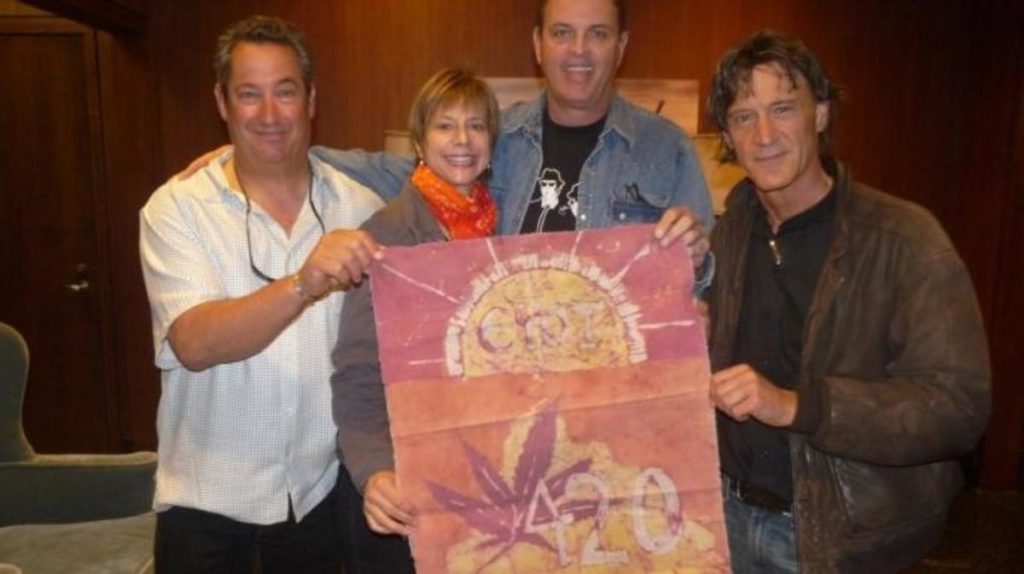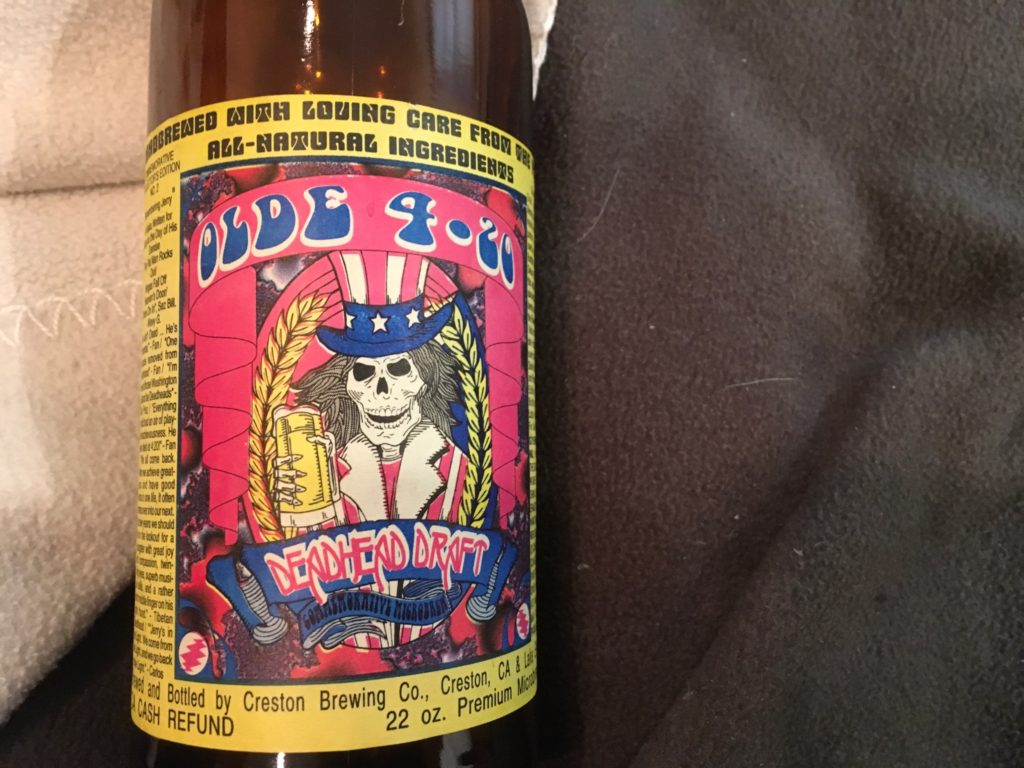420, it’s a magic number. It’s all over dating apps and apartment listings (“4/20 friendly!”) movies and TV — most of the clocks in Pulp Fiction are set to 4:20 and the football scoreboard in Fast Times at Ridgemont High reads 42-0. But what does 4/20 actually mean? Where did this strange code-slash-holiday come from? Here’s how 4/20 became the stoner secret handshake, Weed Christmas and the ideal time of day to light up, all baked into one.
The True Story of 4/20: Reminiscing With the Waldos
The theories surrounding 4/20’s origins are numerous. Some claim it was the police radio code for marijuana marijuana offenses in progress (not true) while others said 4/20 was the penal code for cannabis crimes in California (also not true).
The true story of 4/20’s origins begin, as so many great weed tales do, near San Francisco in 1971. Teenagers at San Rafael High School got their hands on a map that purportedly showed the way to a field of weed in nearby Point Reyes. In perfect Goonies fashion, five friends decided they would seek out this leafy treasure together. The group – who dubbed themselves “the Waldos” because they hung out together by a wall – met every day after school at 4:20 pm for weeks to pursue this noble quest. While they never found the fabled field of green, they smoked a lot of weed while searching for it. 4/20 became the Waldos’ code for both cannabis and consuming it. They even printed the numbers on a tie-dyed flag, complete with a marijuana leaf, which lives today in a San Francisco bank vault. The flag is concrete evidence that they were the originators of 4/20.
I reached out to the Waldos, who still remain friends today, to find out more about this flag and being the founding fathers of 4/20 .

“The flag was created by a girl named Patty Young at San Rafael High School,” they recollect. “It was a project she decided to do in her art class, and surprisingly her art teacher was totally cool with it, even though marijuana was extremely, highly illegal.” Along with the flag, the Waldos’ bank vault contains Patty Young’s official school records showing the art class where she created the flag, plus other items that prove the group came up with 4/20. “We call Patty the Betsy Ross of the Waldos,” they said.
“Back then, we were a band of comedic desperados, united as a Waldo hippie brotherhood, constantly challenged with the task of secrecy and evading parents, coaches, cops and security, educators, business operators and property owners. ”
When I asked the Waldos how they managed to hang on to Young’s flag for 50 years, it’s clear that even as kids, it was very special to them. “Patty created the flag not only because 4/20 itself was so different, secret and unique at that time, but to represent the entire unique Waldos culture, viewpoint, lexicon and outside-the-box adventures we were having,” Waldo Steve Capper said. “When she and our dear mutual friend, Kenny Blumenthal, presented the flag to me, I was very honored that the entire Waldos culture was even identified and recognized outside of our own Waldos group. So the flag has always been treasured and taken care of.”
4/20 usage spread further when Waldo Steve went to college in San Diego, and hung Patty Young’s handmade flag in his dorm room, exposing many other young people to Waldo 420 culture. The flag also served a practical purpose: Waldo Dave Reddix remembers “us putting it on a stick at rock concerts so we could find each other in a massive sea of people when there were no cell phones.”
4/20 Meets the Grateful Dead
But how did teen stoner slang in the 1970s evolve to become universal weed lingo and a massive international holiday? Through the Grateful Dead. The Waldos were only a few degrees of separation from members of the band, and as their circle increasingly adopted 4/20 as shorthand for marijuana, the Dead began to as well.
Although the Waldos used the term 4/20 with the Grateful Dead family, organization, and friends for decades, I asked them if there was a specific moment when they realized that their high school rallying cry had gone national. “The first hard evidence we had ever seen [of 4/20’s reach] was bottles of Olde 4-20 Deadhead Draft beer which we came upon in the 1990s.” But it wasn’t until 1990 that 4/20 came into the national lexicon. At a Grateful Dead show in Oakland, High Times reporter Steve Bloom was handed a flyer telling people to smoke at 4:20 pm on 4/20. Bloom says that at the time, 4/20 was “a bit of stoner slang I’d never heard of.” The actual text of the fateful flyer is truly amazing:

“There is something fantastic about getting ripped at 4:20, when you know your brothers and sisters all over the country and even the planet are lighting up and toking up right along with you.” (Apparently nobody pointed out the existence of time zones to the composer of the flyer.) The flyer also claims erroneously that 4/20 came from the police code for “marijuana smoking in process.” But many credit this handmade flyer with creating the international stoner holiday with this sentence: “Now, there’s something even more grand than getting baked at 4:20. We’re talking about the day of celebration, the real time to get high, the grandmaster of all holidays: 4/20, April 20th.”
Bloom transcribed the flyer and published it in the May 1991 issue of High Times, giving the term its first-ever national publicity. The rest is weed history.
4/20 Before and After Legalization
By 2014, 4/20 marijuana rallies were being held all over the globe, in Peru, Austria, New Zealand, Canada, Iceland, Denmark, Italy, South Africa and Australia. Today 4/20 has gone from being an underground, countercultural salute-slash-protest to a proudly celebrated commercial holiday in the United States, particularly in legal states, with college campus smokeouts, hemp festivals, and blowout sales at cannabis dispensaries.
Indeed, many cannabis industry workers now feel about 4/20 the way bartenders feel about New Year’s Eve: it’s a high-cash flow, high-pressure day with a ton of preparation, promotion, crowds, and stress (albeit hopefully less vomiting). But in the days before decriminalization, 4/20 celebrations outside of liberal cities like San Francisco or Madison were usually a secretive affair. Groups of cannabis lovers would simply gather together in someone’s living room with ample Doritos, Sour Patch Kids, and a stealthily purchased, seed-riddled eighth to offer a smoky toast to the plant.
While few sensible people would want to rewind to Prohibition times, some old-school stoners miss the camaraderie that this underground culture created. The Waldos themselves point out how different things were: “Because cannabis is so accessible and legal now these days, people forget how highly illegal it was and the serious consequences for getting caught,” says Waldo Dave. “Back then, we were a band of comedic desperados, united as a Waldo hippie brotherhood, constantly challenged with the task of secrecy and evading parents, coaches, cops and security, educators, business operators and property owners. There was a whole world that we had to hide from. There was a lot of cunning, fear, and paranoia when purchasing, transporting, and partaking—a lot of adrenaline-fueled close calls and glorious bonding successes and escapes.”
4/20 also ceased to be secretive in-crowd code for weed long ago (although it still gives you plausible deniability should your boss happen to come across your Tinder profile). The Center for Substance Abuse Prevention went so far as to put out a public service document in 2001 entitled “It’s 4:20: Do You Know Where Your Teen Is?” So clearly, the code hasn’t been that “secret” for quite some time.
How Should We Celebrate 4/20 Today?

Today, the Waldos are hailed as weed icons, and now that marijuana has gone mainstream, many cannabis activists are urging marijuana fans to shift the focus of the holiday from celebration, smoking, selling, and snacking to promoting cannabis justice: calling for drug law reform, expanding medical marijuana access, expunging cannabis offenses from people’s criminal records, and remedying Drug War injustices like mass incarceration. On April 20th, 2020, countless Democratic and left-wing legislators actually used the holiday to urge voters to take action for cannabis justice.
So if you celebrate 4/20, give thanks to the many activists who made legal cannabis and public celebration of this holiday possible—and before you light up, consider taking a moment to help thousands who remain imprisoned over a plant. Get educated about the movement for veterans’ access to cannabis. Message your representative or senator and urge them to support expungement, decriminalization, and medical cannabis access for all. Agitate, then celebrate. Now that you can have weed delivered to your house, we’ve got ample time to do both.
Jennifer Boeder is a Chicago-born, Los Angeles transplant who covers psychedelics, cannabis, music, politics, and culture. Her writing has appeared in High Times, DoubleBlind, Cannabis Culture, Civilized, Oxygen, Chicagoist, and Cannabis Now. She celebrated her first 4/20 in a dorm room in Appleton, Wisconsin.


